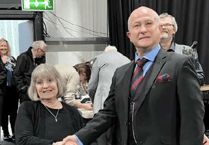The fertility rate rose in Gloucestershire last year, figures show, though it remains below pre-pandemic levels.
The British Pregnancy Advisory Service said a rise nationally may have been caused by many women delaying trying to conceive during the worst of the Covid-19 pandemic in 2020.
Office for National Statistics data shows there were 6,138 live births in Gloucestershire in 2021 – 338 more than the year before.
This gave a total fertility rate of 1.66 children per woman last year, up from 1.59 in 2020 but below 1.69 in 2019.
The total fertility rate is the average number of children a woman would have if she experienced that year’s fertility rate during her childbearing years.
There were 624,828 live births registered in England and Wales in 2021 – up 1.8% from 2020, but below the number registered in 2019.
Likewise, the fertility rate increased from 1.58 to 1.61 year-on-year – the first time it has risen since 2012 – but remained below the rate of 1.65 observed before the pandemic.
The ONS figures are based on birth registrations, and delays mean some births in 2021 may not be covered.
It follows provisional figures, based on NHS births notifications data, published by the ONS in March.
Katherine O’Brien, associate director of communications and campaigns at BPAS, said: "At the height of the Covid-19 pandemic in 2020, many women may have delayed trying to conceive, leading to the slight increase in live births in 2021.
"There is no “right” number of births, but it is important that as a society we provide the support and healthcare services that enable women and their partners to have children at the time that is right for them."
The ONS figures show a fall in fertility rates among younger women but a rise in older groups.
The largest decrease was among women and girls under 20 years old (16%), while women aged 35 to 39 saw fertility rates increase by 5%.
Ms O'Brien said the high cost of childcare and the pay gap often seen between working mothers and similar women without dependent children can make it harder to have children earlier in life.
She added: "There are a variety of reasons why women are choosing to postpone motherhood, from career development to the ever-increasing cost of raising a child."
Of the live births across England and Wales last year, 51.3% were to women who were not married or in a civil partnership – compared to 48.7% to parents who were.
It is the first time since records began in 1845 that more babies were born to mothers who were not in marriages or civil partnerships.
Dr James Tucker, head of health analysis at the ONS, said: “This follows the long-term trend of declining marriage rates and increasing numbers of cohabiting couples seen in recent decades.
“However, caution should be taken in interpreting today’s numbers as we don’t yet know the full impact of the pandemic on marriage and civil partnership statistics.”




